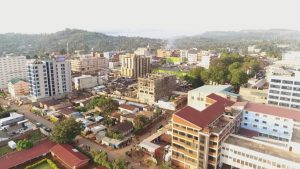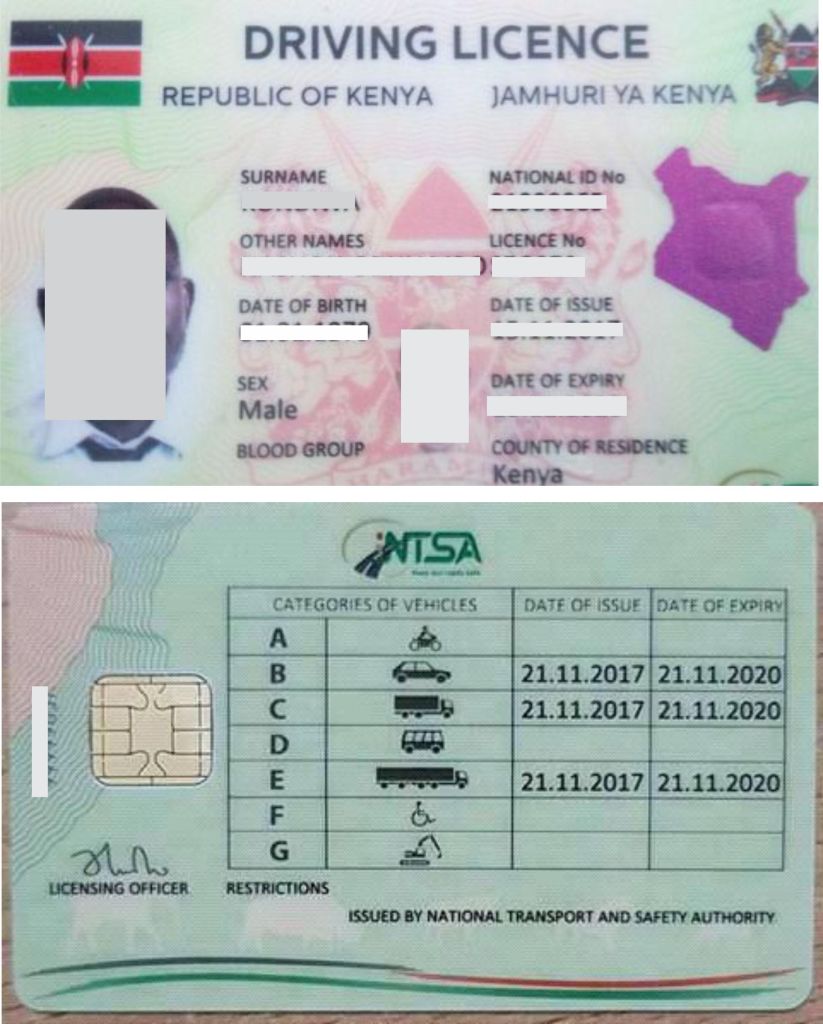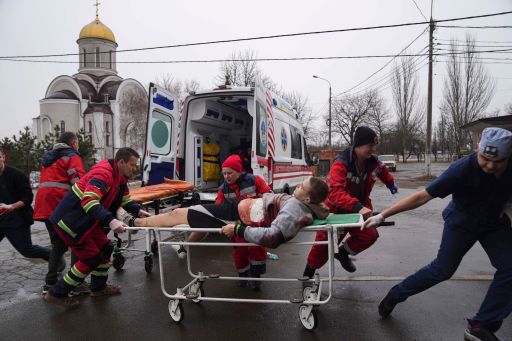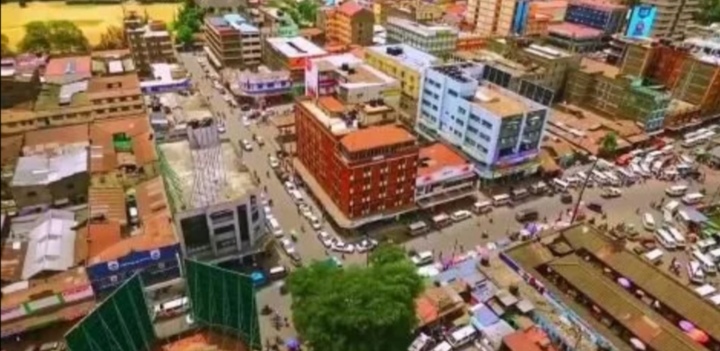Residential estates and housing in Kisii county.
Kisii is a key urban center in south-western area of Kenya. It is the headquarters of Kisii County. Its population according to the Kenya National Census of 2019 was 1,266,860. It serves as the major urban and commercial hub in the larger Gusii highlands and the South Nyanza region. Kisii county is the second largest major town in larger Nyanza after Kisumu City.
It is an active town and houses several businesses, organizations, educational institutions and government agencies. It’s located centrally in the western Kenya tourist route that accesses the Tabaka Soapstone Carvings, Maasai Mara Game Reserve, Lambwe Valley Game Reserve and the entire Lake Victoria basin.
The town still serves its former districts, the larger South Nyanza Counties and the Trans Mara area of western Narok County commercially. Kisii town links the Great Rift Valley to Nairobi to Migori and the Kenya-Tanzania Isebania border. Economically, it is home to a manufacturing industry dependent on agriculture majorly plantation farming.
Demographically, Kisii municipality town is mainly inhabited by the Gusii community (also known as the Kisii). Also, the Luo, Luhya, Kuria, Asians and Kalenjin make up a minority of residents.
The health amenities serving Kisii Include the Kisii Teaching and Referral Hospital (Level 6) the biggest public health facility in the county. The town has a good number of private hospitals and medical centers. They include Oasis Specialist Hospital, Hema Hospital, Getembe Hospital, Christa Marianne Hospital, Nyangena Hospital, Bosongo Medical Center, Kisii Eye Hospital, Ram Hospital and the Agha khan only a year old in the town
Residential Estates in Kisii Municipality.
There is a notable lack of urban planning considering the land shortage within Kisii county. Nevertheless, other than the municipality owned housing estates and private owned homes, there have been a number of upcoming housing estates such as Nyanchwa neighborhood owned by the government’s housing agency.
The major estates are in either in organized suburbs or municipality wards such as Milimani, Gesonso, Itierio, Nyangena, Nyamataro, Mwembe Tayari, Gekomu, Menyinkwa, Nyabururu, Embassy and Nyanchwa. These are categorized as middle- to upper-middle-class environs consisting of a number of modern private homes on own space areas and apartments. The lower- to middle-class neighborhoods and outlying residential areas include Suneka, Jogoo, Getare, Menyinkwa and Nyankongo which comprise of a diverse and mixed population.
Kisii is a preferred residential town as it did not get badly affected by the post election violence that hit its neighbour counties like Kisumu, Sotik and Kericho except for its border area town off Nyangusu and Chebilat. Kisii county experienced a mass exodus from these towns and diaspora residents fleeing persecution fearing inter-tribal stigmatization into the town for their own safety. Consequently, lead to the large shortage of land being witnessed now.
Most estates don’t have access to piped water and sewer system and the existing ones are unreliable. The local authority is working on infrastructure and security to enable good living conditions for its huge population. Lack of street lights, which are a threat to security has so far been improved by the county government but there is more to be done..
Milimani, Mwembe Tayari, Jogoo and Nyanchwa residential estates witness the highest rent figures due to their proximity to town, availability of water and sewerage services. A two bedroom self contained apartment in these estates goes for between Sh16, 000 and Sh25,000. Nyamataro and Gesonso, Menyinkwa, Suneka, Itierio, estates charge lower rates as they are situated far away from town and lack piped water, currently anywhere between Sh 10,000 to sh16,000. Rents go as high as Sh30,000 in the region’s upmarket residential areas like Milimani and Nyangena. Obviously depending on distance from the highway and the features of the structures you go for, it could be higher or less.
Before 2007 post election violence, rent wasn’t this high but now tenants pay double. The increased demand for both commercial and residential buildings has led to escalation of rent.








Good one, thanks for the information
Thanks, Enock.
Hello! I know this is kinda off topic but I’d figured I’d ask. Would you be interested in exchanging links or maybe guest authoring a blog article or vice-versa? My website discusses a lot of the same topics as yours and I feel we could greatly benefit from each other. If you happen to be interested feel free to send me an email. I look forward to hearing from you! Great blog by the way!
Pretty part of content. I simply stumbled upon your website and in accession capital to assert that I get actually loved account your blog posts. Any way I’ll be subscribing on your augment and even I success you get right of entry to consistently quickly.
I believe this is among the such a lot significant information for me. And i am satisfied studying your article. However should remark on some basic things, The site style is perfect, the articles is in point of fact great : D. Good process, cheers
I like the helpful information you provide in your articles. I will bookmark your blog and check again here regularly. I’m quite certain I will learn many new stuff right here! Good luck for the next!
whoah this blog is fantastic i like studying your posts.
Keep up the great work! You realize, many persons are looking round for
this information, you could aid them greatly.
Visit my blog post: vpn special code
What i do not understood is in reality how you’re not actually much more neatly-preferred than you
may be now. You’re very intelligent. You recognize thus considerably when it comes to this
topic, produced me individually imagine it from numerous various angles.
Its like men and women are not involved except it is one thing to accomplish with Girl gaga!
Your own stuffs nice. All the time care for it
up!
Look into my webpage – vpn special coupon
I could not refrain from commenting. Perfectly written!
Also visit my website :: vpn special coupon code 2024
I’ll immediately grab your rss feed as I can not find your email subscription link
or e-newsletter service. Do you have any? Kindly permit me recognize so that I
may subscribe. Thanks.
my site :: vpn coupon code 2024
My developer is trying to persuade me to move to .net from PHP.
I have always disliked the idea because of the expenses.
But he’s tryiong none the less. I’ve been using WordPress on a number
of websites for about a year and am anxious about switching to another
platform. I have heard good things about blogengine.net.
Is there a way I can import all my wordpress content into it?
Any help would be really appreciated!
My page – vpn special coupon code 2024
I pay a visit day-to-day a few web pages and websites to read
articles or reviews, but this web site gives quality based content.
Review my web site :: vpn coupon code 2024
Hello! I realize this is kind of off-topic but I needed to ask.
Does building a well-established blog like yours take
a lot of work? I’m completely new to running a blog but I do write in my journal on a daily basis.
I’d like to start a blog so I can share my personal experience and feelings online.
Please let me know if you have any ideas or tips for brand
new aspiring blog owners. Thankyou!
my website :: vpn special coupon
I know this web page provides quality dependent content and extra information, is there any other web site
which gives these data in quality?
Also visit my web-site … vpn special
It’s an amazing paragraph in favor of all the online users;
they will get advantage from it I am sure.
Feel free to visit my web blog :: vpn coupon 2024
I’ll immediately clutch your rss feed as I can’t in finding your e-mail subscription link or newsletter service.
Do you have any? Kindly allow me recognise in order that I may subscribe.
Thanks.
Hi would you mind letting me know which webhost you’re using?
I’ve loaded your blog in 3 completely different internet browsers and I must say this blog loads
a lot quicker then most. Can you recommend a good web hosting
provider at a fair price? Thanks, I appreciate it!
my web page facebook vs eharmony to find love online
Thanks for the auspicious writeup. It actually
was once a enjoyment account it. Look complex to far brought agreeable from you!
By the way, how could we communicate?
Also visit my web-site – eharmony special coupon code 2024
I was wondering if you ever considered changing the structure of your website?
Its very well written; I love what youve got to
say. But maybe you could a little more in the way of content so people could connect with it better.
Youve got an awful lot of text for only having one or 2 images.
Maybe you could space it out better?
Feel free to surf to my blog post nordvpn special coupon code 2024
триггер в психологии
https://bit.ly/krasiviy-seks-video-krasiviy-seks
https://bit.ly/krasiviy-seks-video-krasiviy-seks